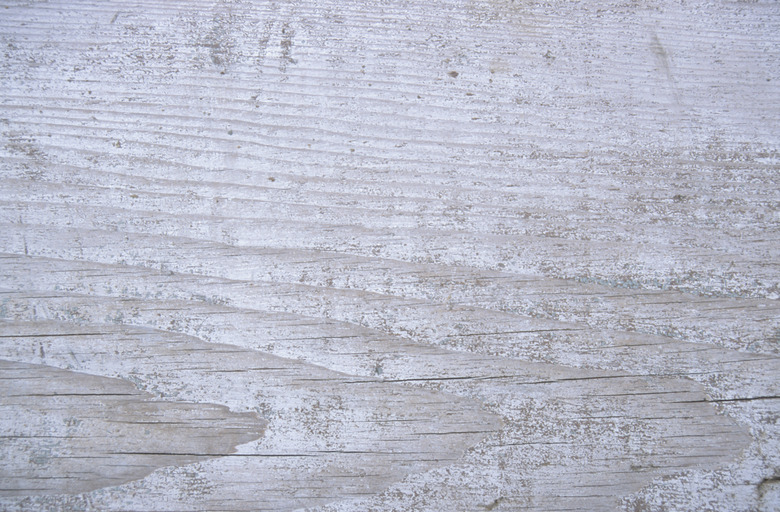How To Paint Pine For A White Washed Look
Things Needed
-
Bristle scrub brush
-
1-gallon pail filled with cold water
-
120-grit sand paper
-
Natural shellac
-
1-inch bristle paint brush
-
1 gallon acrylic latex white
-
4-inch polyester house painting brush
-
Clean rags
Tip
Whitewash freshly cut pine because the paint will tend to preserve the natural light color.
The six-to-one paint-to-water ratio can vary to produce a lighter (more wood shows) or darker (more paint shows) finished appearance.
Warning
Once the paint is applied to the wood, it can never be completely removed.
If Tom Sawyer was around today, he might make up a batch of whitewash that included salt, alum (also called common potash aluminum), unsulfured molasses, water and hydrated lime. It is still possible to use these ingredients to whitewash a fence, though I suspect the practice is not very common anymore, mostly being limited to historic societies and preservationists. Nowadays, light-colored woods, like oak and pine, can be partially stained with modern formulas for interior use. The results might or might not resemble the old 19th-century picket fences, but at the very least, the process can provide bright color around your house.
Step 1
Clean the wood with a bristle scrub brush and cold water. Just scrub the wood lightly in the direction of the grain with the wet brush. Get rid of all dust, dirt and grime and let the wood dry.
Step 2
Sand all the pine knots with a piece of sandpaper.
Step 3
Cover each pine knot with a coat of natural shellac. Then let the shellac dry.
Step 4
Spread a drop cloth near your work area to protect the floor and begin the painting process by mixing six parts of a high quality white acrylic latex wall paint with one part water. If you wish to use oil paint, use paint thinner as the mixer and keep the ratio the same.
Step 5
Apply the paint one board at a time with a 4-inch paint brush.
Step 6
Let the paint sit for two to three minutes.
Step 7
Remove the excess paint with a clean, dry cloth.
Step 8
Let the paint dry and add a second or third coat if necessary.
